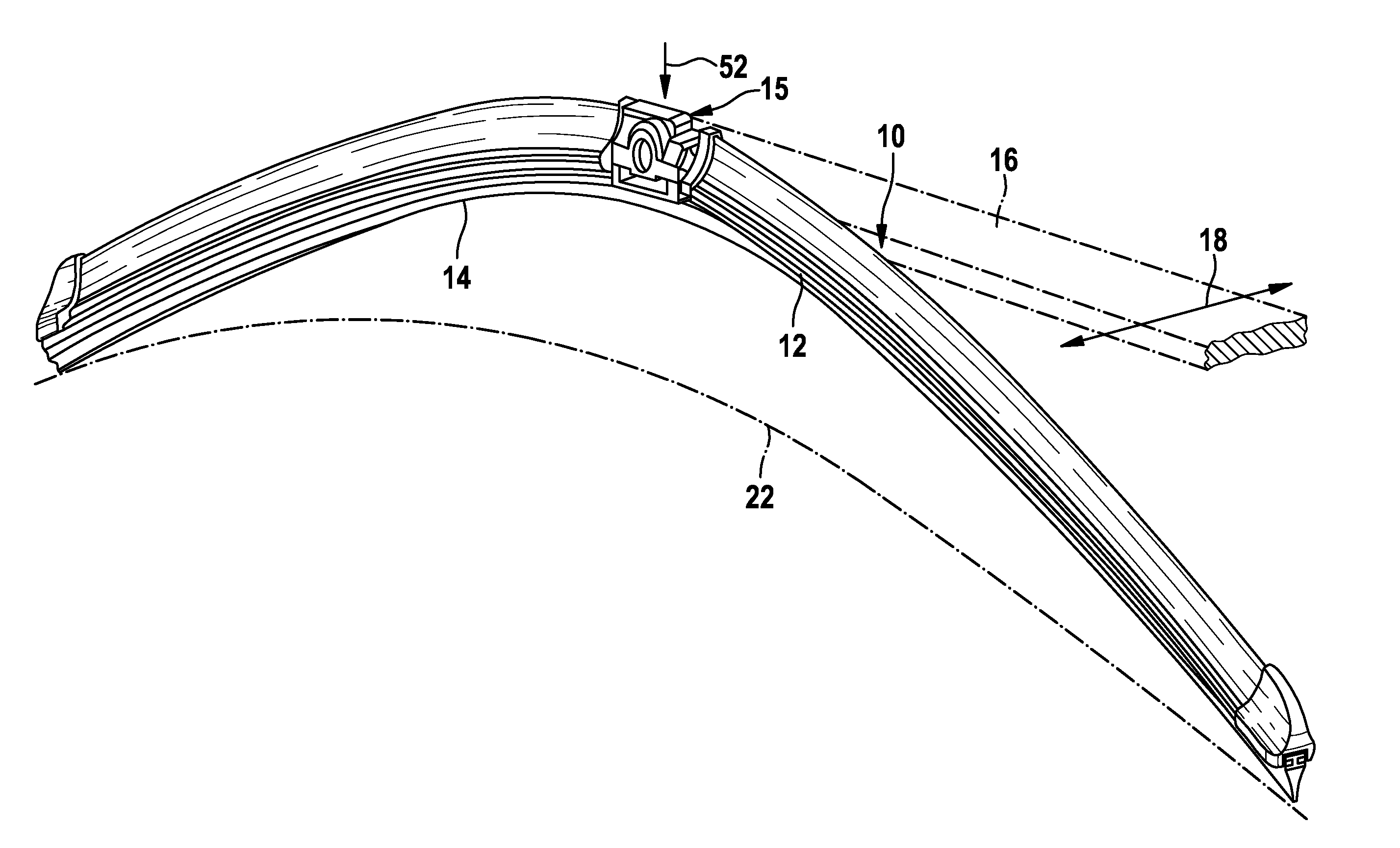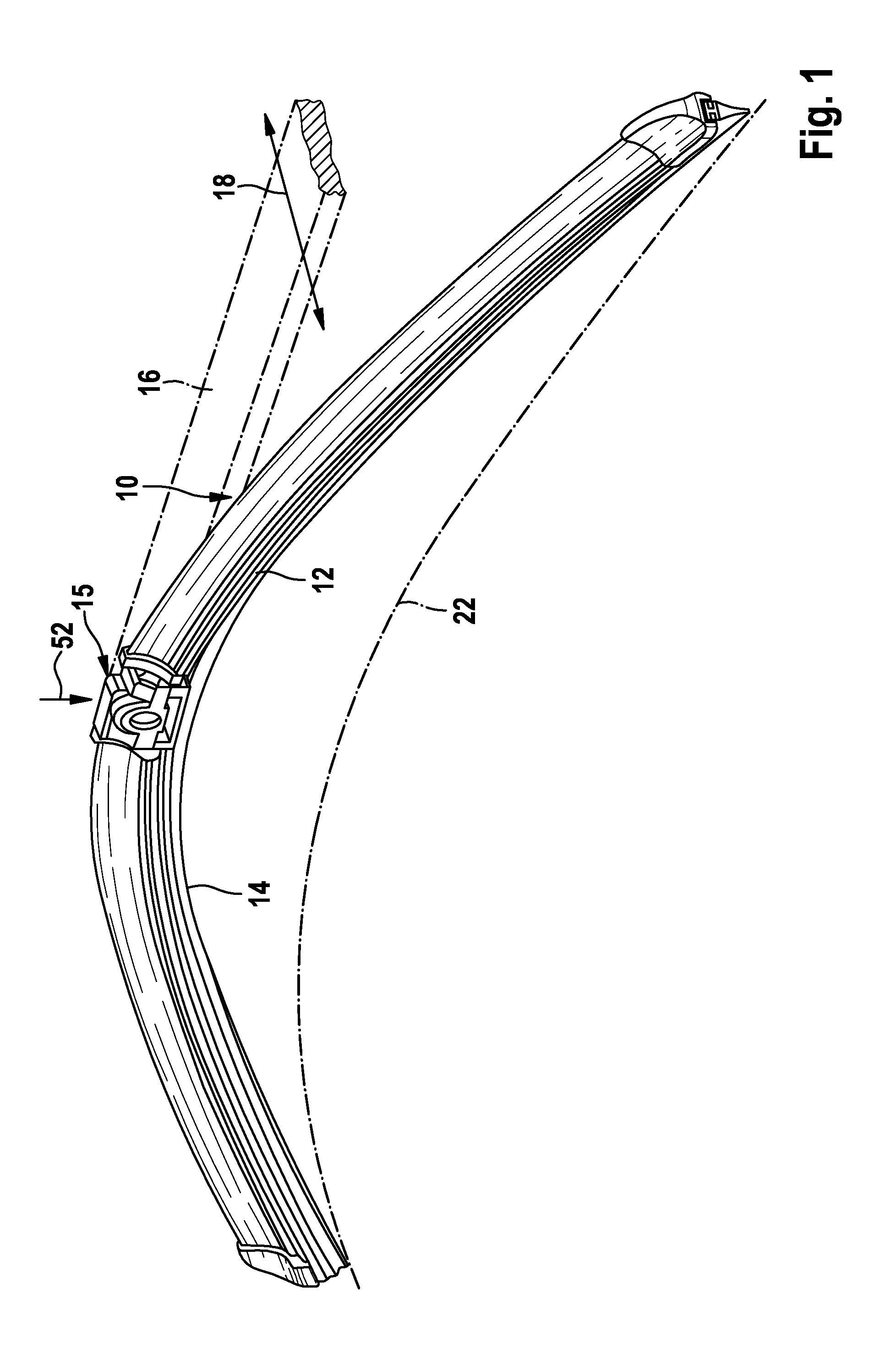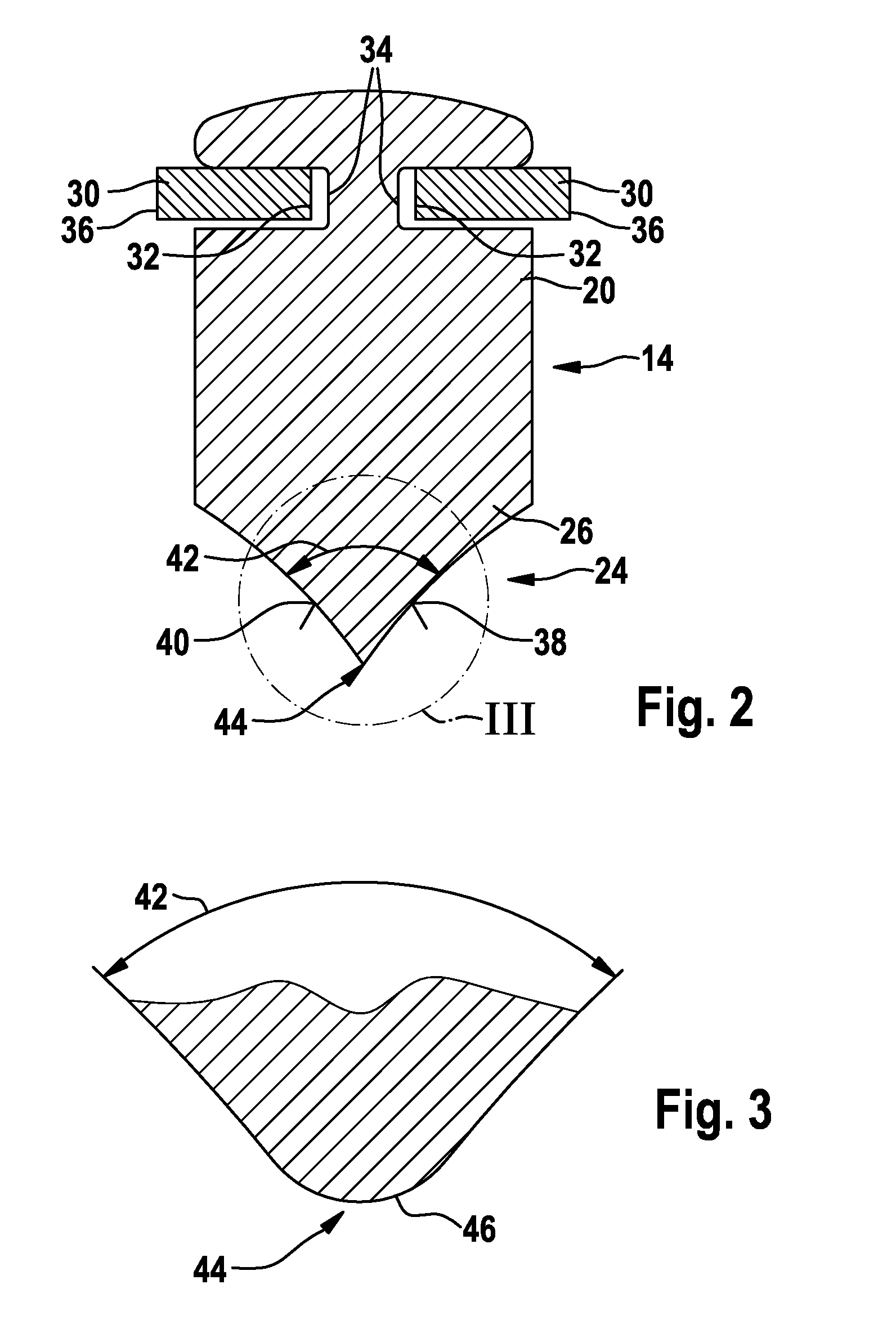Wiper blade
a technology of a wedge and a blade, applied in the field of wedges, can solve the problems of causing the wiping wedge in the region of the tilting web causing the noise of flipping over, and causing the wedge to turn over very quickly
- Summary
- Abstract
- Description
- Claims
- Application Information
AI Technical Summary
Benefits of technology
Problems solved by technology
Method used
Image
Examples
Embodiment Construction
[0018]A wiper blade 10 has a spring-elastic supporting element 12 which is elongated in the manner of a band and is in the form of two spring rails 30 running parallel at a distance from each other. Said spring rails are inserted by their mutually facing, inner edge strips 32 in longitudinal grooves 34 in a head strip 20 of a wiper strip 14 while their outer edge strips 36 protrude laterally for a distance out of the longitudinal grooves 34. Toward a vehicle window 22, a wiper strip head 20 is adjoined by a wiper lip 26 which slides over the vehicle window 22 in the direction of a double arrow 18 during a wiping movement. For this purpose, a wiper arm 16 drives the wiper blade 10 via a connection device, the wiper-blade-side part 15 of which can be connected to the wiper arm 16 in an articulated and releasable manner while said part sits fixedly in the central region of the wiper blade 10 on the supporting element 12 thereof. At the same time, the wiper arm 16 loads the wiper blade ...
PUM
| Property | Measurement | Unit |
|---|---|---|
| Length | aaaaa | aaaaa |
| Length | aaaaa | aaaaa |
| Thickness | aaaaa | aaaaa |
Abstract
Description
Claims
Application Information
 Login to View More
Login to View More - R&D
- Intellectual Property
- Life Sciences
- Materials
- Tech Scout
- Unparalleled Data Quality
- Higher Quality Content
- 60% Fewer Hallucinations
Browse by: Latest US Patents, China's latest patents, Technical Efficacy Thesaurus, Application Domain, Technology Topic, Popular Technical Reports.
© 2025 PatSnap. All rights reserved.Legal|Privacy policy|Modern Slavery Act Transparency Statement|Sitemap|About US| Contact US: help@patsnap.com



